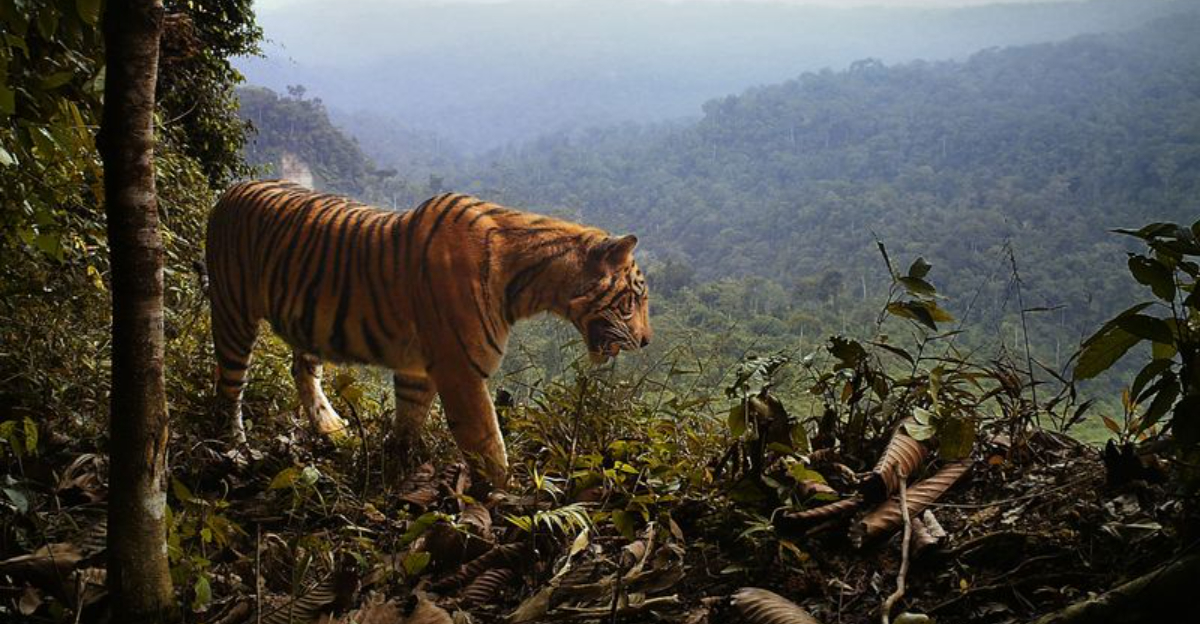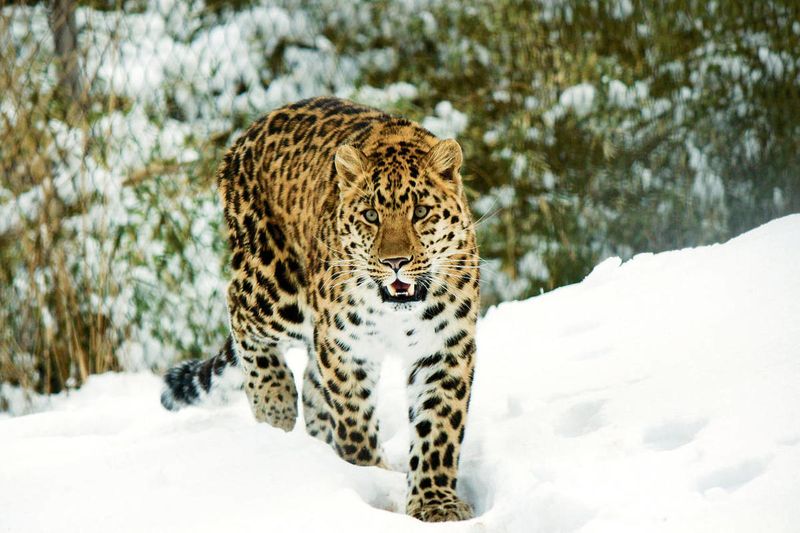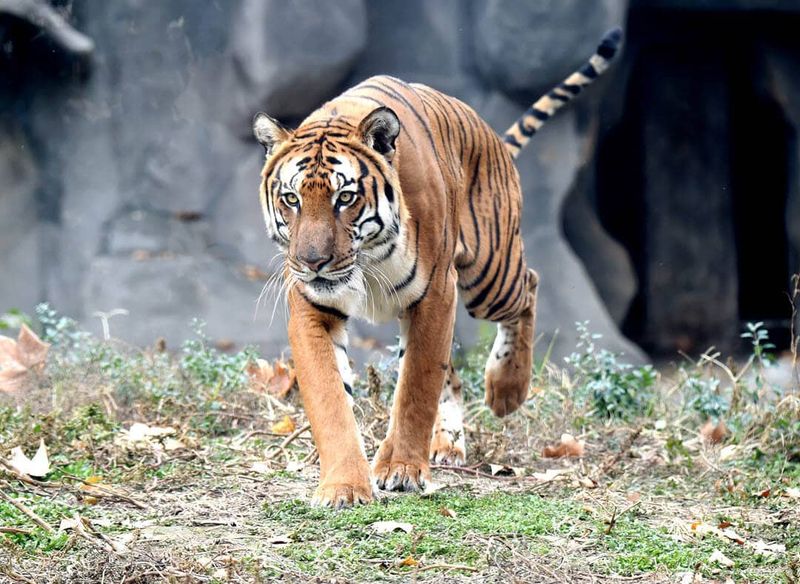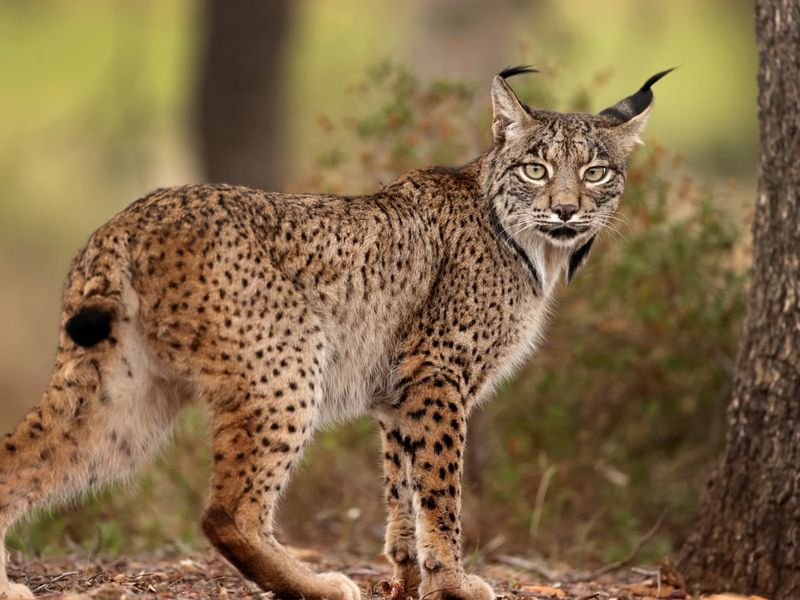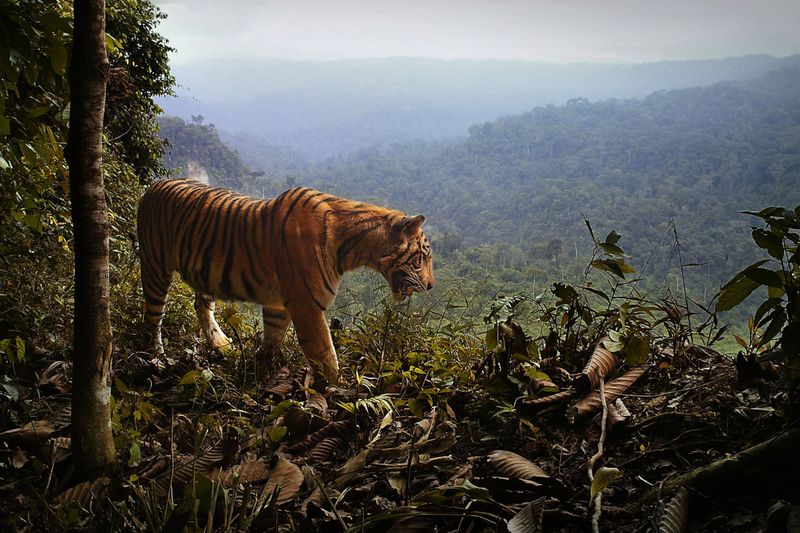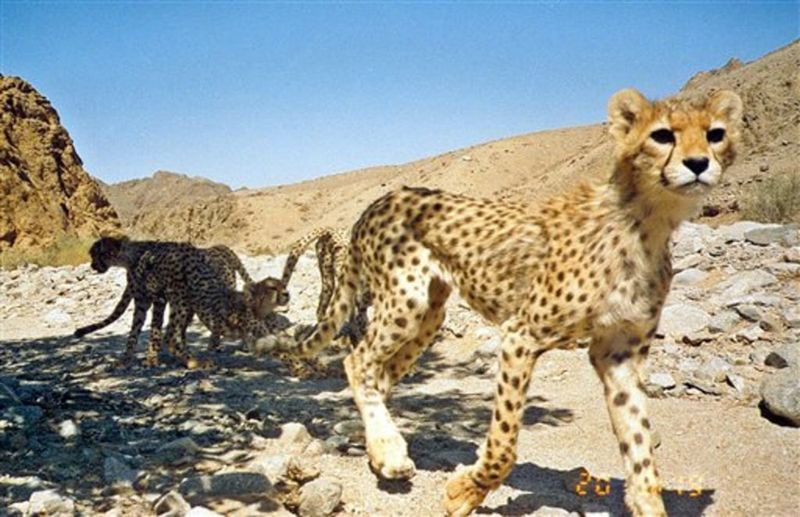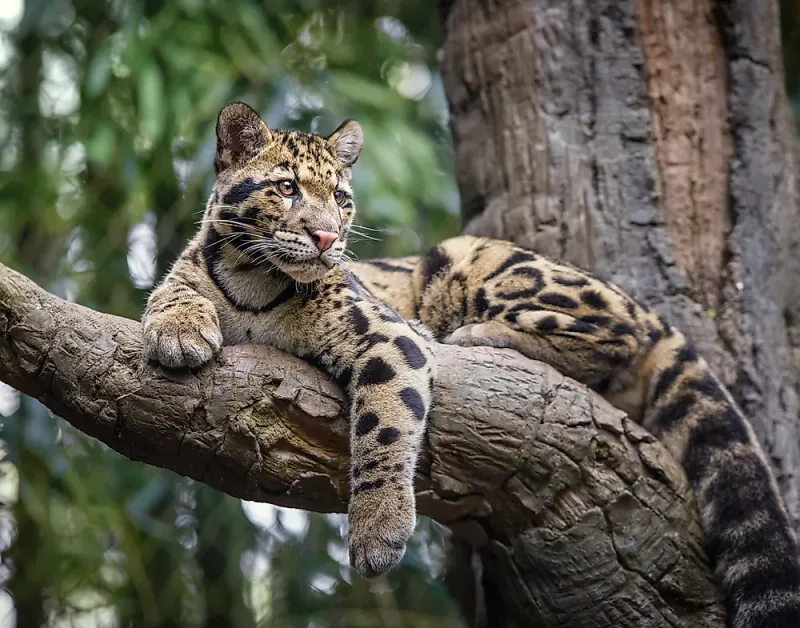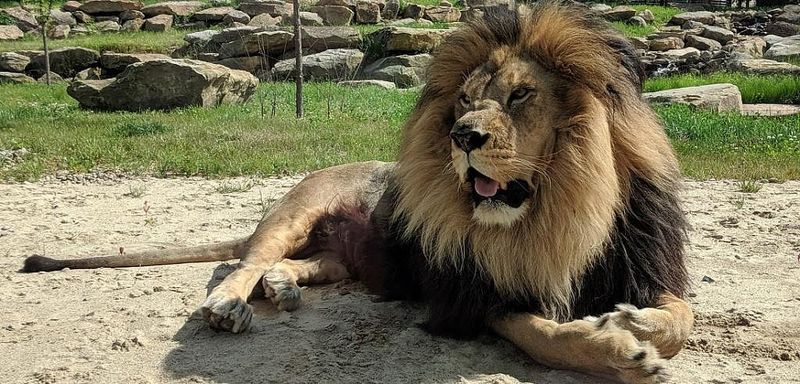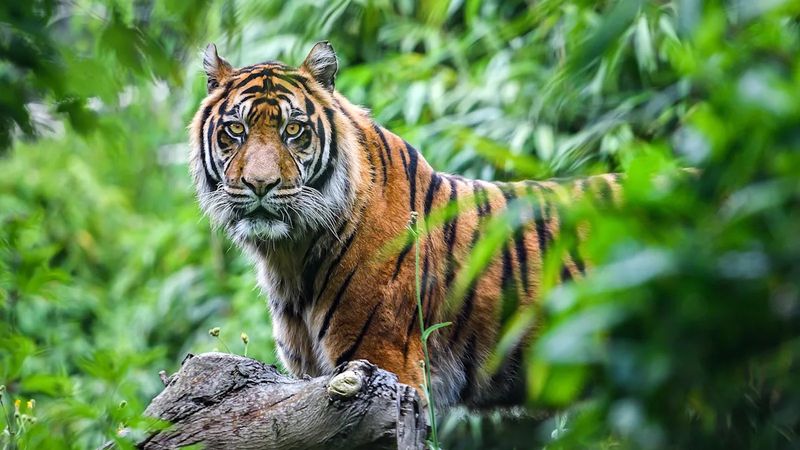📖 Table of Content:
Big cats have fascinated humans for centuries with their majestic beauty and powerful presence. Sadly, many magnificent species now face the threat of extinction due to habitat loss, poaching, and climate change. These incredible animals, once abundant across various continents, are disappearing at an alarming rate. Let’s look at 8 stunning big cat breeds that future generations might never have the chance to see in the wild.
1. Amur Leopard
With fewer than 100 individuals left in the wild, the Amur leopard holds the unfortunate title of the world’s most endangered big cat. Native to the temperate forests of Russia and China, these rare cats have adapted to survive harsh winters with temperatures as low as -22°F.
Their thick, pale cream-colored coat with widely spaced rosettes makes them uniquely beautiful among leopards. Unlike other leopard subspecies, they have longer limbs and thicker fur for cold-weather survival.
Poaching for their stunning pelts remains the primary threat to their existence, alongside habitat fragmentation from logging and development. Conservation breeding programs offer a glimmer of hope for their survival.
2. South China Tiger
Considered functionally extinct in the wild since the 1990s, the South China tiger survives only in captivity today.
Once widespread throughout central and eastern China, this tiger subspecies fell victim to Mao Zedong’s anti-pest campaigns and relentless habitat destruction. Smaller than Siberian tigers but larger than Sumatran tigers, they feature a vibrant orange coat with narrower, more closely set stripes.
Their distinctive white belly and throat create a striking contrast against their bright coloration. A captive breeding program called ‘Project Tiger’ works to preserve the remaining genetic line, with hopes of eventual reintroduction. Fewer than 100 individuals remain in Chinese zoos and breeding facilities.
3. Iberian Lynx
The world’s most endangered feline species, the Iberian lynx once roamed across Spain and Portugal in the thousands. Today, after intensive conservation efforts, their population has increased from fewer than 100 to about 400 individuals – still perilously low.
Recognizable by their tufted ears, short tails, and distinctive facial ruff, these medium-sized cats sport yellowish-brown coats with dark spots. Their specialized diet relies heavily on European rabbits, making them vulnerable when rabbit populations decline from disease.
Conservation success has come through habitat protection, rabbit population management, and captive breeding programs. Without these efforts, this uniquely beautiful European cat would likely have disappeared forever.
4. Sumatran Tiger
The smallest surviving tiger subspecies, Sumatran tigers have adapted perfectly to life in Indonesia’s dense rainforests. Their smaller size allows them to navigate thick jungle underbrush, while their darker orange coats with closely spaced stripes provide excellent camouflage.
Fewer than 400 remain in the wild, primarily in isolated pockets of Sumatra. Palm oil plantations have replaced much of their forest habitat, forcing these solitary hunters into increasingly fragmented territories.
Unlike other tigers, Sumatrans have more beard and mane growth, giving males an especially impressive appearance. Each tiger’s stripe pattern is unique, like a fingerprint, allowing researchers to identify individuals when monitoring wild populations.
5. Asiatic Cheetah
Once ranging from the Arabian Peninsula to India, the Asiatic cheetah now clings to existence in Iran’s central desert region. Fewer than 50 individuals remain, making them one of the most critically endangered big cats on Earth.
Slightly different from their African cousins, Asiatic cheetahs have longer legs, a more slender build, and a lighter coat with smaller, more densely packed spots. Their pale fur helps reflect the intense desert heat while providing camouflage in arid landscapes.
Vehicle collisions on highways crossing their territory have become a major threat, along with poaching and prey depletion. Iran has placed the cheetah’s image on their national football team’s jerseys to raise awareness about their plight.
6. Clouded Leopard
Named for their distinctive cloud-like markings, these medium-sized cats inhabit Southeast Asian forests from Nepal to Indonesia. Their population has declined by over 30% in the past two decades, with fewer than 10,000 remaining in increasingly fragmented habitats.
Clouded leopards possess the longest canine teeth relative to skull size of any living cat, earning them the nickname “modern-day saber-tooth.” Their incredibly flexible ankle joints allow them to climb down trees headfirst and hang from branches using only their hind feet.
Deforestation for palm oil plantations threatens their survival, along with poaching for their beautiful pelts and bones used in traditional medicine. Many scientists consider them an evolutionary link between big and small cats.
7. Barbary Lion
The magnificent Barbary lion once ruled North Africa’s Atlas Mountains, distinguishable by its massive black mane extending through the belly.
The last wild Barbary lion was shot in Morocco in 1942, marking the end of these majestic cats in their natural habitat. Males weighed up to 500 pounds, making them the largest lion subspecies in history. Their thick coats protected them from cold mountain nights, while their powerful builds helped them take down large prey like Barbary sheep.
Some zoo lions today carry partial Barbary genetics, sparking debate about potential restoration programs. The lion appears in countless North African artifacts and was famously used in Roman gladiatorial contests, a testament to its cultural significance before extinction.
8. Javan Tiger
Declared extinct in the 1980s, the Javan tiger was one of three tiger subspecies native to Indonesia. The last confirmed sighting occurred in 1976, though occasional unconfirmed reports keep a sliver of hope alive among conservationists.
Smaller than mainland tigers, Javan tigers displayed darker orange coats with numerous thin stripes – adaptations to their rainforest environment. They played a crucial role in controlling wild pig populations that now damage crops across Java without their natural predator.
Rapid human population growth on Java, combined with extensive deforestation and agricultural expansion, sealed their fate. The Javan tiger serves as a sobering reminder of how quickly a species can disappear when habitat loss reaches critical levels.
